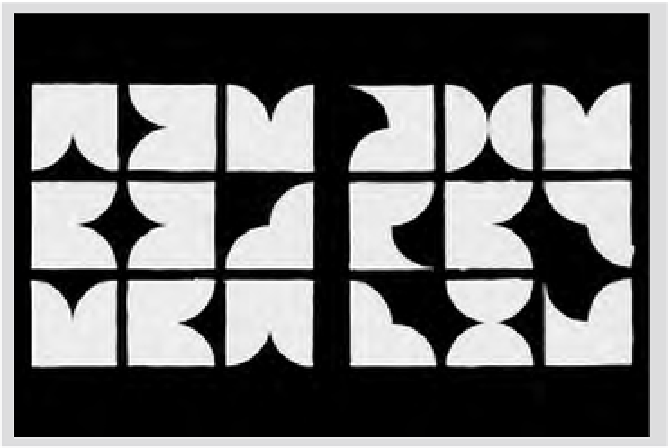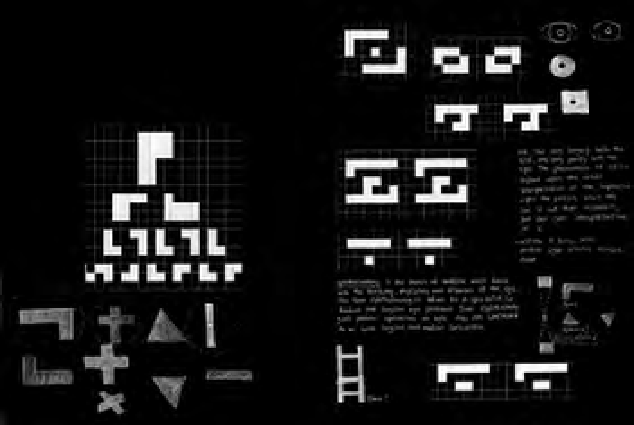Graphics Reference
In-Depth Information
A TRADITIONAL MODEL
This chapter explores the design process and its role in typographic
problem solving. Many models exist that schematically represent the
design process. But in fact, there is no single process or method for
working through problems. Most designers approach their work in a
highly individual manner, some using a combination of traditional and
digital tools and methods. Digital technology has played an enormous
role in the evolution and individualization of design processes.
A well-known model of the design process consists of five steps,
which are explained below. Traditionally, these steps have been
thought to occur in a linear manner, beginning with
defining
the
problem and progressing toward
realizing
the solution. But rarely,
if ever, is the process so smooth and predictable. Design formulas
certainly can be devised and followed letter by letter, ending in
solutions lacking imagination and mental rigor. But perhaps it is more
helpful to think of the process as five fields of activity that overlap one
another in a multidimensional environment of intellectual discourse.
The process is not linear; rather, it is one of interaction and ambiguity
where paths appear to meander aimlessly toward durable and
innovative solutions (Fig.
12-1
).
Defining.
Immersion into the design process begins by defining
the problem and its parameters. What are the client's needs, and what
is the sphere of the client's activity? What are the goals and objectives
of a potential solution? Who is the audience? What are the budget and
production limitations? To answer these and other pertinent questions
is to set the problem's parameters. These parameters may change at any
time during the process and should not be too tightly defined.
Gathering.
This phase provides the essential information
needed by the designer regarding all aspects of the problem. This
includes gathering information about the client, problem content,
and production requirements. While gathering information, designers
should make use of all available resources. Experts, libraries, museums,
antique shops, and movie theaters are all excellent information-
gathering venues. The Internet is also an invaluable resource.
12-1
This typographic
diagram reveals the
design process as a
flexible, dynamic, and
unpredictable mental
journey. Diverse lines of
thought and activity lead
eventually to closure.
defining
gathering
realizing
ideating
synthesizing
12-2
Selected spreads from sketchbooks reveal process drawings, thoughts, and
visual notations. (Designers: Yoon-Young Chai, Brent McCormick, Matthew Stay)






























